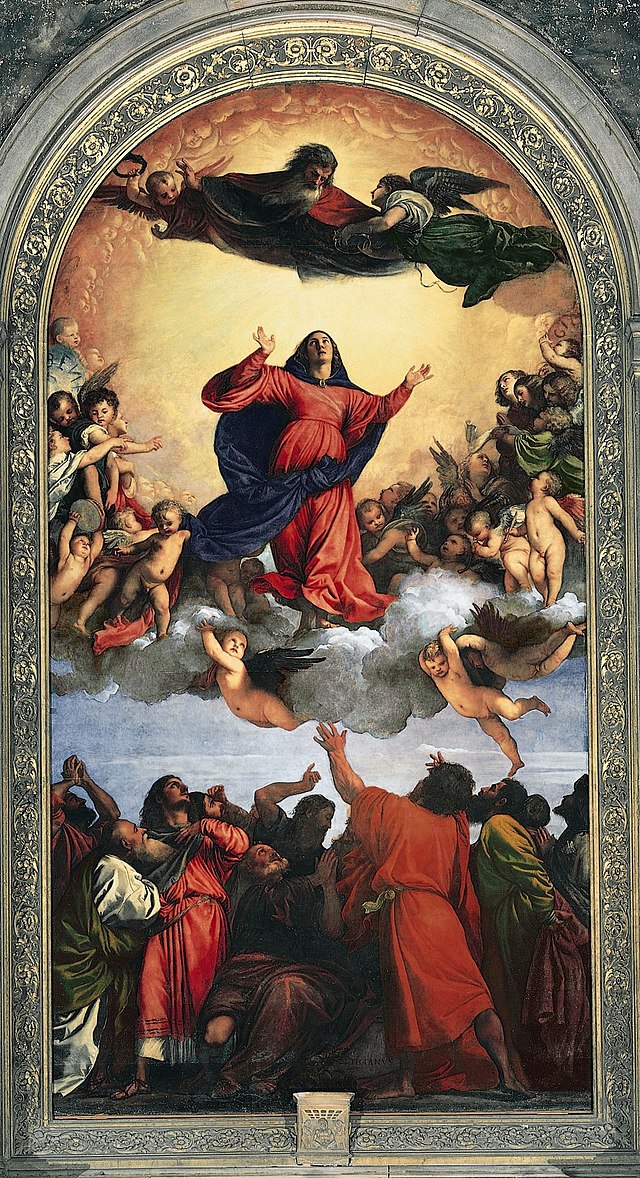* * * *

“Maria Grotto at Santa Maria Tak Bercela Catholic Church, Surabaya, Indonesia“
* * * *
August 15 is the Feast Day for St. Mary, the Virgin, as celebrated in the Episcopal Church. See also Mary (mother of Jesus) – Wikipedia:
She is identified . . . as the mother of Jesus through divine intervention. Christians hold her son Jesus to be Christ (i.e., the messiah) and God the Son Incarnate. Mary (Maryam) also has a revered position in Islam, where a whole chapter of the Qur’an is devoted to her, also describing the birth of Jesus. . . Traditionally, Christians believe that she conceived her son miraculously by the agency of the Holy Spirit. Muslims believe that she conceived her son miraculously by the command of God. . . [She] is considered by millions to be the most meritorious saint of the Church. Christians of the Catholic Church, the Eastern Orthodox Church, Oriental Orthodox Church, Anglican Communion, and Lutheran churches believe that Mary, as Mother of Jesus, is the Mother of God and the Theotokos, literally “Bearer of God.”
Another note: In Renaissance paintings especially, Mary is portrayed wearing blue, a tradition going back to Byzantine Empire, to about 500 A.D., “where blue was ‘the colour of an empress.'” Another explanation is that in in Medieval and Renaissance Europe:
[T]he blue pigment was derived from the rock lapis lazuli, a stone imported from Afghanistan of greater value than gold. Beyond a painter’s retainer, patrons were expected to purchase any gold or lapis lazuli to be used in the painting. Hence, it was an expression of devotion and glorification to swathe the Virgin in gowns of blue.
The Bible readings for this feast day include Isaiah 61:10-11, Psalm 34, Galatians 4:4-7, and Luke 1:46-55. For the full readings see The Lectionary Page, but here are some highlights.
Isaiah 61:10-11 begins with the passage, “I will greatly rejoice in the LORD, my whole being shall exult in my God; for he has clothed me with the garments of salvation, he has covered me with the robe of righteousness. . .” Psalm 34 begins in the same vein: “I will bless the LORD at all times; his praise shall ever be in my mouth.”
Galatians 4:4-7 includes the passage that because we are children – of God – “God has sent the Spirit of his Son into our hearts, crying, ‘Abba! Father!'” (A reminder that as Christians our duty is to act at all times as “children of God,” certainly easier said than done.)
But the highlight of the readings is Mary’s Magnificat, also known as “the song of Mary:”
“My heart praises the Lord; my soul is glad because of God my Savior, for he has remembered me, his lowly servant! From now on all people will call me happy, because of the great things the Mighty God has done for me. . . He has kept the promise he made to our ancestors, and has come to the help of his servant Israel. He has remembered to show mercy to Abraham and to all his descendants forever!”
See Magnificat – Wikipedia, which added that in Luke’s Gospel the hymn is spoken by “the Virgin Mary upon the occasion of her Visitation to her cousin Elizabeth. In the narrative, after Mary greets Elizabeth, who is pregnant with the future John the Baptist, the child moves within Elizabeth’s womb. When Elizabeth praises Mary for her faith, Mary sings what is now known as the Magnificat in response.”
The article noted that Mary’s song echoes several Old Testament biblical passages, including allusions to “the Song of Hannah” and from the Books of Samuel (1Samuel 2:1-10). Another note, “the Magnificat is included in the Book of Odes, an ancient liturgical collection found in some manuscripts of the Septuagint,” one of the earliest versions of the Hebrew Bible, or the Old Testament as we call it. (The word septuagent comes from the Greek word for 70, and refers to “the legendary seventy Jewish scholars who completed the translation as early as the late 2nd century BCE,” or two centuries before Jesus was born.
As to what happened to Mary, according to tradition she was taken “bodily” up to heaven at the end of her earthly life, as shown in the painting below.
* * * *

* * * *
The upper image is courtesy of Mary (mother of Jesus) – Wikipedia. The lower image is courtesy of Assumption of Mary – Wikipedia, the free encyclopedia, with the caption: “Possibly the most famous rendition of the subject in Western art, Titian‘s Assunta (1516–18).”
That is, the “Catholic Church teaches as dogma that the Virgin Mary ‘having completed the course of her earthly life, was assumed body and soul into heavenly glory.'” In turn, while the Assumption “is not an Anglican doctrine, 15 August is observed by some within Anglicanism as a holy day.”
* * * *